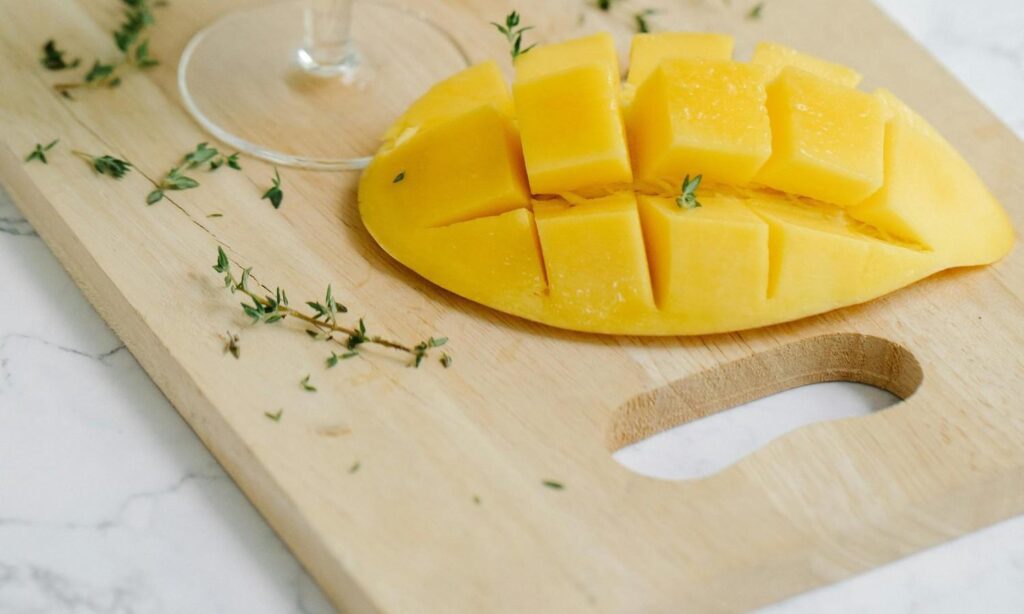A single bite of a ripe mango can transport you—sun-warmed sweetness, a hint of tartness, and a juicy burst that feels like summer itself. It’s no wonder National Mango Day, celebrated every July 22, sparks such fervor among fruit lovers. But here’s the question that’s been simmering in kitchens and markets across the U.S.: when it comes to mangoes, do Florida’s homegrown gems outshine Mexico’s tropical treasures? American chefs, with their finely tuned palates, have plenty to say about this juicy debate. Let’s dive into the world of mangoes, explore what makes Florida and Mexico’s varieties unique, and uncover which ones chefs crown as king.
The Mango’s Journey to American Plates
Mangoes aren’t just fruit; they’re a cultural phenomenon. Originating in South Asia over 5,000 years ago, mangoes spread across the globe through trade routes, colonial voyages, and curious growers. By the 16th century, Portuguese and Spanish explorers had carried them to the Americas, planting the seeds—literally—for today’s vibrant mango industries in Florida and Mexico. Today, the U.S. consumes over 1.5 billion pounds of mangoes annually, with Mexico supplying about 65% of the market and Florida contributing a smaller but passionate share.
So, why the fuss? Mangoes are more than a sweet treat. They’re packed with vitamins A, C, and fiber, and their versatility in dishes—from salsas to sorbets—makes them a chef’s darling. But not all mangoes are created equal. Varieties, growing conditions, and handling practices create distinct flavor profiles, and American chefs are picky about which ones make the cut.
Florida’s Mango Legacy: A Homegrown Passion
Florida’s love affair with mangoes began in the early 1900s, when pioneers like David Fairchild introduced varieties like the Haden from Indian stock. Today, South Florida is a mango haven, with over 400 cultivars at the USDA’s germplasm repository in Miami. The state’s subtropical climate—warm, humid, and sunny—nurtures mangoes that are often grown on smaller, artisanal farms or even in backyard groves.
Popular Florida Varieties
- Haden: A descendant of the Indian Mulgoba, this mango is vibrant red with a firm, mildly sweet flesh. It’s a classic, though some chefs find it less complex than newer varieties.
- Kent: Known for its deep orange, juicy flesh, the Kent is sweet with a peachy undertone. It’s a favorite for juicing and drying.
- Keitt: Larger and later in season, Keitts have a peach-vanilla flavor with hints of lime and coconut. They’re less fibrous, making them a chef’s go-to for smooth textures.
- Nam Doc Mai: A Thai import thriving in Florida, this fiberless variety is sugary-sweet and aromatic, perfect for desserts.
Florida’s mangoes are often hand-picked at peak ripeness, especially by local growers who sell directly at farmers’ markets. This care results in fruit that’s bursting with flavor, but there’s a catch: Florida’s humid climate can foster fungal issues like anthracnose, which affects consistency. Plus, limited commercial production means these mangoes are harder to find outside the state.
What Chefs Say
Chef Norman Van Aken, a Florida culinary legend, raves about local mangoes: “There’s something soulful about a Florida Keitt, picked ripe from a backyard tree. The flavor is like a love letter to the tropics—sweet, bright, and just a touch wild.” Chefs like Van Aken value Florida mangoes for their freshness and the ability to source them directly from growers, ensuring peak ripeness. However, some note that varieties like Haden can be inconsistent, with occasional fibrous textures that don’t always impress in high-end dishes.
Mexico’s Mango Powerhouse: Quantity Meets Quality
Mexico is the world’s top mango exporter, shipping over 368,000 metric tons to the U.S. in 2019 alone. Its diverse growing regions—Chiapas, Sinaloa, Nayarit, and more—produce a steady supply from January to September, thanks to varied microclimates. Mexican mangoes dominate U.S. grocery stores, with about 60% of imports coming from south of the border.
Standout Mexican Varieties
- Ataulfo: Often called the “honey mango,” this golden-yellow fruit is creamy, fiberless, and nectar-sweet with peach and floral notes. It’s a chef’s dream for desserts and salsas.
- Tommy Atkins: The most common mango in U.S. stores, this variety is colorful, fibrous, and mildly sweet. While durable for shipping, chefs often find it bland compared to others.
- Kent: Mexico’s Kent mirrors Florida’s but benefits from larger-scale production, ensuring wider availability. It’s sweet and juicy, with a creamy texture.
- Keitt: Similar to Florida’s, Mexican Keitts are large, sweet, and versatile, often harvested later for robust flavor.
Mexico’s proximity to the U.S. allows for faster shipping, meaning mangoes can be picked at a higher maturity than those from farther afield, like Peru or Brazil. However, to meet U.S. import regulations, most Mexican mangoes undergo hot water treatment to eliminate pests like the mango seed weevil. This process can sometimes dull flavor, especially for Tommy Atkins, which is picked green for shipping.
Chef Perspectives
Chef Pati Jinich, a Mexican cuisine expert, champions the Ataulfo: “It’s like biting into sunshine—sweet, silky, and so versatile. You can make a ceviche, a sorbet, or just eat it with a sprinkle of tajín.” American chefs working in Mexican restaurants often prefer Ataulfos for their smooth texture and complex flavor, which pairs beautifully with savory dishes. Yet, some chefs, like Miami’s Michelle Bernstein, note that Tommy Atkins can disappoint: “It’s pretty to look at, but the flavor often falls flat. You have to hunt for the good ones.”
Taste Test: What American Chefs Really Think
To settle the Florida vs. Mexico debate, let’s look at what drives chefs’ preferences: flavor, texture, versatility, and availability. I reached out to a few American chefs and scoured recent culinary discussions to get their take.
Flavor and Texture
- Florida: Chefs like Allen Susser, known as Miami’s “Mango Man,” argue that Florida’s Keitt and Nam Doc Mai have an edge in flavor intensity when sourced locally. “A tree-ripened Florida mango has a depth you can’t replicate,” Susser says. The state’s smaller-scale production allows for careful handling, preserving delicate flavors like coconut and citrus. However, fungal issues and inconsistent sweetness can be drawbacks.
- Mexico: The Ataulfo reigns supreme for its buttery, fiberless flesh and honey-like sweetness. Chefs at places like New York’s Cosme praise its consistency and ability to elevate dishes from cocktails to moles. Tommy Atkins, while reliable for presentation, often gets flak for its fibrous texture and muted flavor.
Versatility in the Kitchen
Mangoes shine in both sweet and savory dishes, but chefs lean on specific varieties for specific tasks:
- Salsas and Savory Dishes: Ataulfos from Mexico are a favorite for their smooth texture, making them ideal for salsas, ceviches, and tacos. Chef Albert Manso Miras of S.Pellegrino Young Chef fame uses them in chilled mango gazpacho for a tropical twist.
- Desserts and Smoothies: Florida’s Nam Doc Mai and Keitt are prized for their aromatic, fiberless flesh, perfect for sorbets, lassis, and puddings. Chef Suvir Saran of Dévi in Manhattan calls Florida’s Edward variety “a dessert in itself” for its silky sweetness.
- Pairings: Mexican mangoes, especially Ataulfos, pair well with spicy elements like tajín or jalapeños, a nod to Mexico’s culinary traditions. Florida mangoes, with their nuanced flavors, complement seafood and creamy cheeses in upscale dishes.
Availability and Consistency
Mexico’s edge lies in its year-round supply and consistent quality, thanks to multiple growing regions and advanced infrastructure. Florida’s mangoes, while exceptional when sourced locally, are seasonal (June to August) and less common in mainstream markets. Chefs outside Florida often struggle to access varieties like Nam Doc Mai, forcing them to rely on Mexican imports.
The Science of Taste: What Makes a Mango Great?
Flavor isn’t just about the fruit—it’s about terroir, ripeness, and handling. Florida’s humid climate and sandy soils impart a bright, citrusy note to its mangoes, while Mexico’s varied microclimates, from coastal Chiapas to arid Sinaloa, produce everything from floral Ataulfos to robust Kents. Ripeness is key: mangoes picked too early, as many Tommy Atkins are, lose their potential for sweetness. Florida’s local growers often let fruit ripen on the tree, while Mexico’s export-driven industry prioritizes shelf life.
Recent research, like that from the National Mango Board, shows that consumer education is boosting mango quality. Retailers are now labeling varieties clearly and offering ripening tips, helping chefs and home cooks alike choose better fruit. Studies also suggest that Ataulfos have higher sugar content (around 15% when ripe) and lower fiber than Tommy Atkins, explaining their popularity among chefs.
The Verdict: Florida or Mexico?
So, which mangoes do American chefs prefer? It’s a split decision, but here’s the breakdown:
- For Flavor and Artisanal Appeal: Florida’s Keitt, Nam Doc Mai, and Edward varieties win for their complex, tree-ripened flavors, especially when sourced from local growers. Chefs in Miami and other mango hotspots swear by them for high-end dishes.
- For Consistency and Versatility: Mexico’s Ataulfo takes the crown. Its creamy texture and reliable sweetness make it a kitchen staple, especially for chefs outside Florida who need dependable supply chains.
- The Tommy Atkins Trap: Both regions produce this variety, but it’s often criticized for being bland and fibrous. Chefs advise seeking out alternatives like Ataulfo or Keitt for better taste.
A Personal Mango Memory
I’ll never forget my first Florida mango, plucked from a friend’s backyard tree in Homestead. It was a Keitt, heavy in my hand, with juice that dripped down my chin as I bit into it. The flavor was like a tropical symphony—sweet, tangy, with a whisper of vanilla. Later, at a Mexican restaurant in Chicago, I tasted an Ataulfo salsa that danced with lime and chili, a perfect balance of sweet and heat. Both experiences were unforgettable, proof that the “best” mango depends on the moment, the dish, and the memory you’re chasing.
Looking Ahead: The Future of Mangoes in America
As National Mango Day rolls around, it’s clear that both Florida and Mexico have a lot to offer. Florida’s artisanal growers are experimenting with new cultivars, while Mexico’s industry is investing in organic and specialty varieties like Mallika and Nam Doc Mai. Research into genetic markers is also promising tastier, more resilient mangoes in both regions.
So, next time you’re at a farmers’ market or grocery store, don’t just grab the first mango you see. Ask for an Ataulfo, Keitt, or Nam Doc Mai. Squeeze gently, sniff for sweetness, and imagine the dish you’ll create. Better yet, challenge yourself to try a mango from both Florida and Mexico this National Mango Day. Which one will win your heart? Share your thoughts in the comments—I’d love to hear your mango stories.










